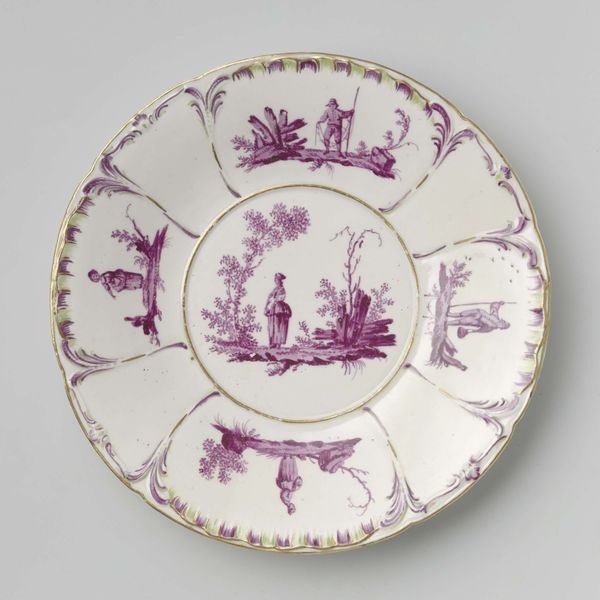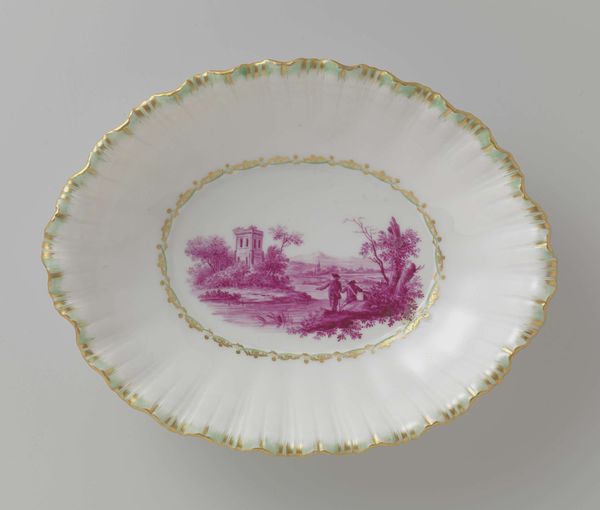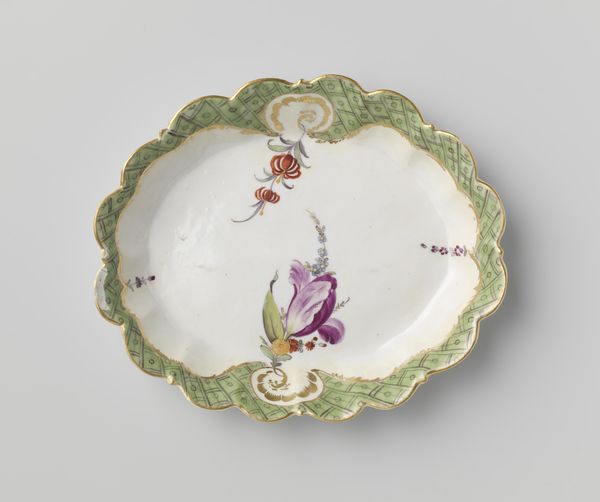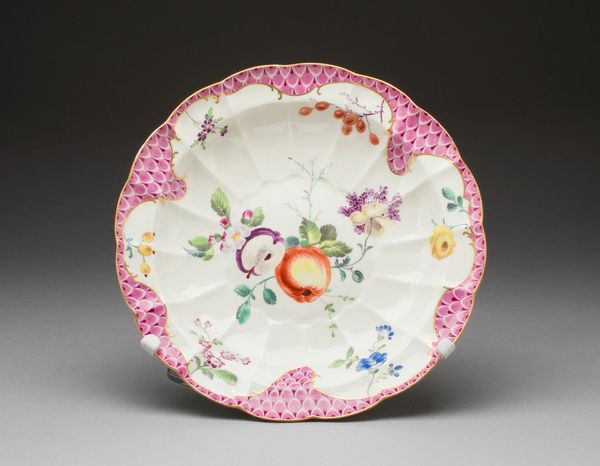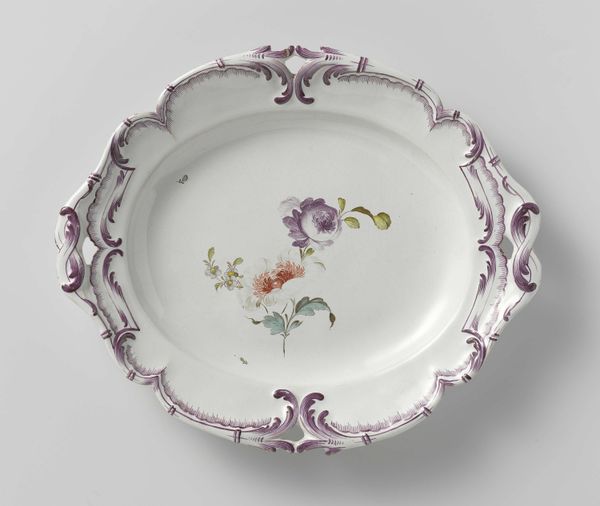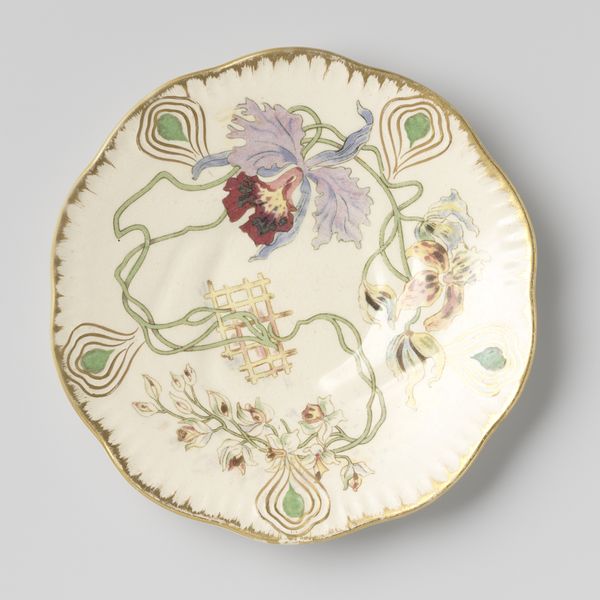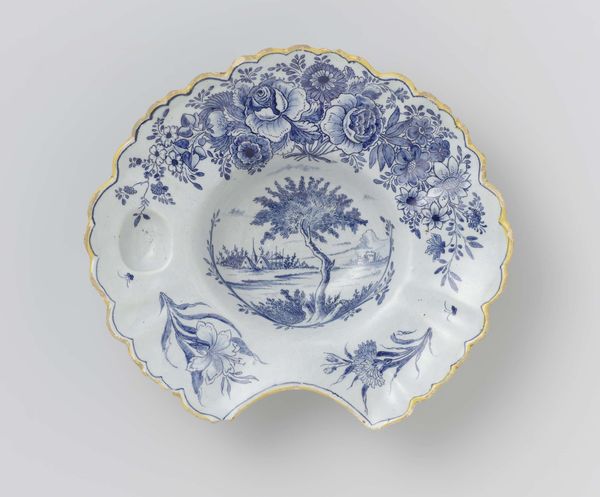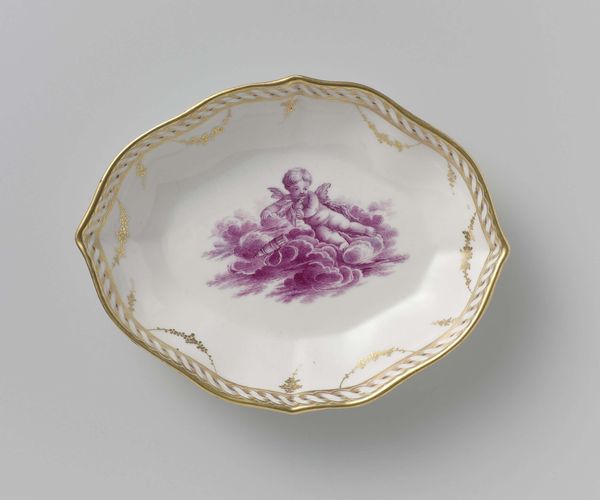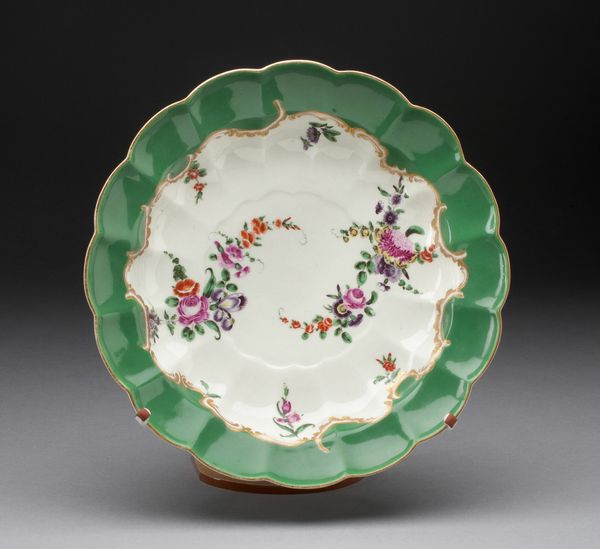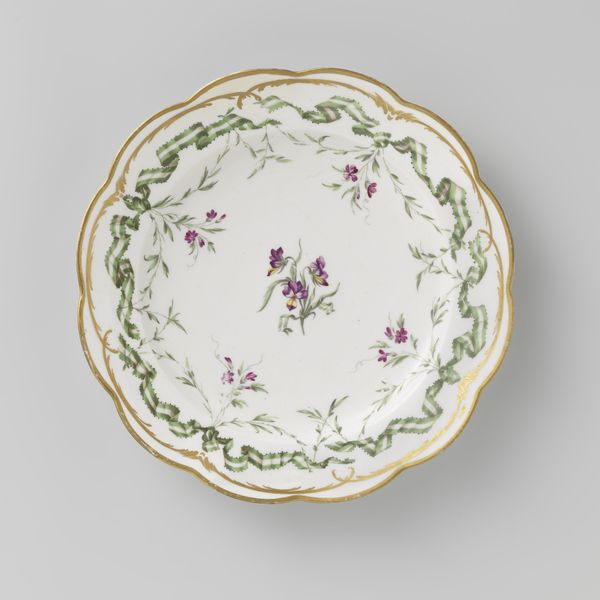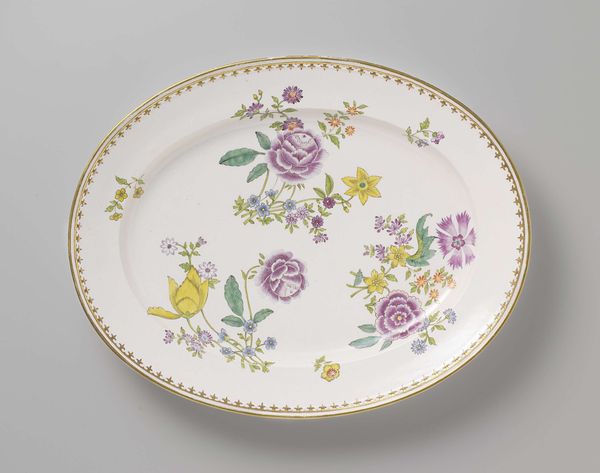
ceramic, porcelain
#
landscape
#
ceramic
#
porcelain
#
stoneware
#
intimism
#
ceramic
#
rococo
Dimensions: height 6 cm, width 37.7 cm, depth 27.3 cm
Copyright: Rijks Museum: Open Domain
Curator: Here we have an elegant Ewer and Basin, crafted around 1760-1770, residing here at the Rijksmuseum. These pieces are crafted from porcelain. Editor: It’s quite striking. The pale violet landscape against the white porcelain creates an ethereal, almost dreamlike effect. It makes you think about leisure, perhaps cleanliness, even intimacy. Curator: Indeed. These basins and ewers were definitely items of status, placed in spaces for intimate cleansing rituals. And look at the detailing in the Rococo style! The scalloped edges and delicate floral motifs add to the overall feeling of refinement. How do you see the function expressed by the form? Editor: Formally, I am interested in the semiotics of shape and the narrative elements present in the imagery, but as I interpret the material context I find it compelling. Porcelain itself had strong socio-economic implications—the material and production signified global trade and imperial power, but also colonial extraction and a desire for intimacy expressed through possession. The lighthearted violet of the illustration contrasts, but fails to overwhelm that historical tension. Curator: I hadn’t considered that. But what do you make of the scene painted onto it? It has a distinct idyllic landscape style. What symbols stand out? Editor: It’s an idealised, carefully composed version of country life for someone that can afford stoneware like this, I guess. I immediately notice that within the general scene there's a smaller, circular inset with a sailboat – perhaps hinting at broader trade or travel opportunities afforded by the wealth needed to purchase the ewer in the first place. Curator: A pertinent point, though do you believe the artist truly was engaging in such deliberate criticism? Or was this simply a reflection of their lived experience, normalising status without critical consideration? Editor: It is certainly possible that the artist wasn’t intending to create an oppositional commentary, I find it hard to view artwork without an historicist perspective these days. Curator: It’s funny how the work resonates with you. Looking closely at this ceramic artifact offers various interpretations to explore history, aesthetics and ideology of status! Editor: Well, on the level of sensory data, at the very least we both got something novel to consider about trade, taste and porcelain!
Comments
rijksmuseum about 2 years ago
⋮
Although Delft was the most important centre for the faience industry, other towns and cities also had potteries. In 1759 the wine merchant Johan van Kerckhoff founded a faience factory in Arnhem. It produced imitations of Delftware, but also pieces with contemporary forms, such as this ewer and basin in a restrained Rococo style.
Join the conversation
Join millions of artists and users on Artera today and experience the ultimate creative platform.
